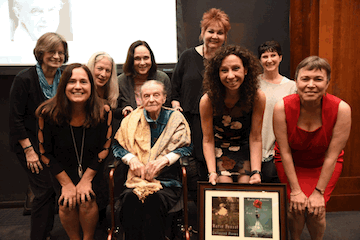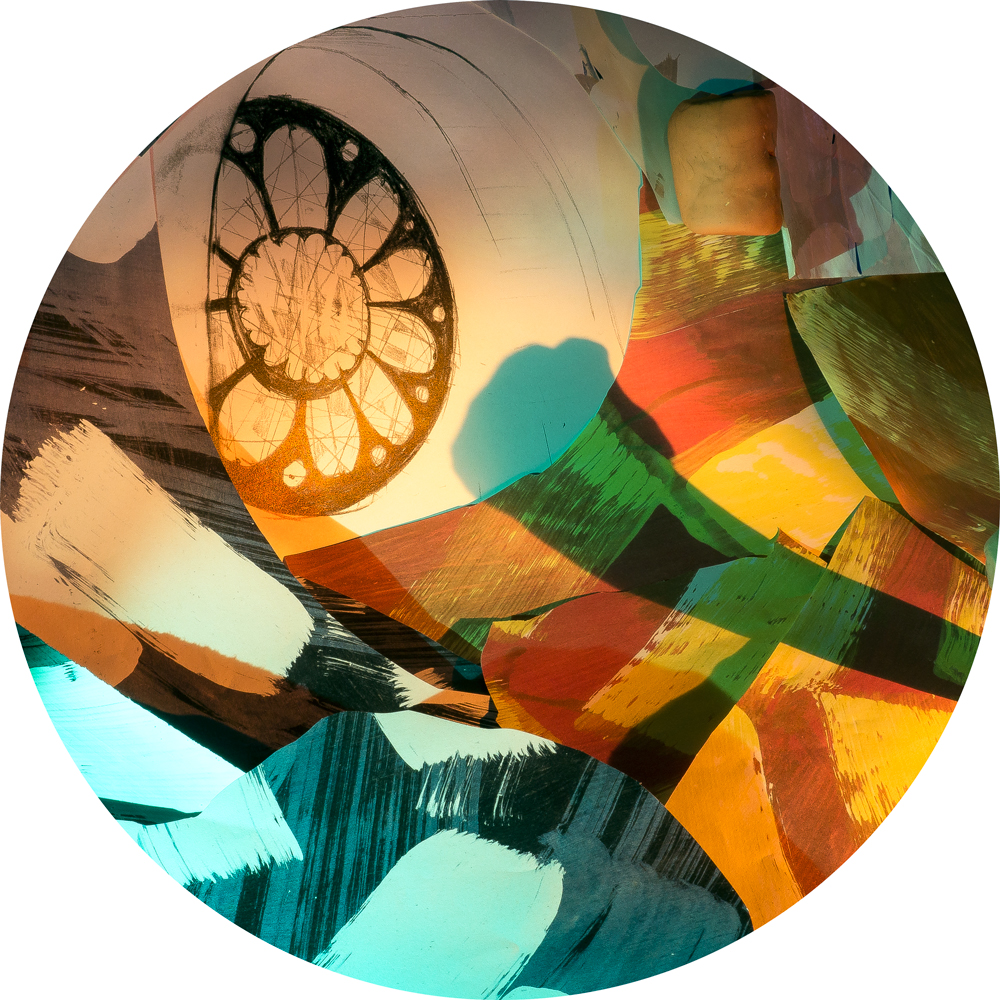Claudia Monpere
Animal Night
First the instinct to whittle bone.
I want to eat orange. See through stones.
Trees drink sun, learn by limb and root.
Deer bones exposed. Unfettered jaw.
Triangle of hip. Raccoon claw.
What soil unearths, what we dilute.
And why are we waiting? Always.
In lines, in loss, in blue day gaze.
Why the language of bitter root?
I want water, silence, amber.
I want night's throat to remember.
Hand in river, fingertips mute.
Sestina for Spider Lady
—after Bruce Conner's mixed media, "Spider Lady House"
Housed she is in this box of shredding walls,
sides lined with rusty bottle caps. Lucky
Lager, Dad's root beer. Is she not at home?
Spinning, present, waiting. Pantyhose
stuffed to bursting, web of twine and voices.
Laddered with runs, see how they stretch clear
across the box, across the doll's blind gaze. Clear
mornings lick layers of floral wall
paper. White roses powdered with voices.
Cribellum for weaving strands of luck.
Boards poke through, old food. Wax. Burnt oil hoses
the ceiling. What is an urgent home?
A place her spinning shrouds, for home
is stuffed with glue and winks. Letter scraps, clear
rhinestone brooch, bird wing, pantyhose.
Wind billows her lines of silk. No seawall
will restrain. Spinnerets squeeze out liquid luck.
Each strand hardens in air, a spiral voice.
She eats silk, wings, stillness. Swallows voices.
She spins piriform, ampullate. Spins madly home.
Who has hung the silver skate? Some potluck
hour when children wintered and time was clear.
She nests her eggs in saucers, crawls walls
till they hang in ruins. Snares herself in nylon hose
till the web turns sloppy and a garden hose
licks the wreck clean. Little ones' humming voices.
Fangs and hair bristling the box's walls.
Clumped in a ball they are sleeping home.
If the wind is right, they'll parachute clear
away from bottle cap heaven and Lucky
Lager medals. The spider lady knows luck.
Knows the wet spots on tissue. How pantyhose
droop under gossamer skies. It's clear
light is simply show for whispered voices.
What dry alphabet scratches home?
Hearing it like fever, she becomes the walls.
Pantyhose vibrate with gorging voices.
Luck is a whimper shrouded in home.
Crumble clear, tumble dear. Hunger your walls.
|
|
 |
 |
|
|
 |
 |
The most recent addition to The Mezzo Cammin Women Poets Timeline is Rosa Newmarch by Jean L. Kreiling.
Marie Ponsot was presented with a Lifetime Achievement Award at the Celebration of the Timeline reaching 75 essays, Lincoln Center, Fordham University (Sponsored by Fordham's Curran Center) Friday, October 20th, 2017.
Charlotte Innes is the recipient of the 2018 Mezzo Cammin Scholarship to the Poetry by the Sea conference.
|
|
|
 |
|
|
|
 |
| Rachael Gorchov: Recently I completed a body of work that focused on the landscapes that define suburban office and industrial complexes, contemplating their subtle relationships with the history of landscape painting. When looking at these places I saw English landscape gardens – orchestrated nature that gave way to picturesque landscape painting. I documented my subjects onsite by drawing their reflections in a Claude Glass, a convex black mirror popularized as an observation device in the 18th century. This tool appealed to me for how its skews and bulges its reflection, making my work highly subjective from the start. I then constructed paintings in the studio based on these drawings. The three-dimensional nature of my paintings further emphasized the forced perspective in my initial drawings and required viewers to explore the paintings much like they might explore a physical space by moving around, crouching and craning their necks.
Irregular versions of geometric forms such as cubes, parabolic curves, cones and triangles comprised the dimensional shapes of these pieces and eventually gave way to my working nearly exclusively on concave surfaces and ‘rocks with cast shadows.’ I settled on these structures for a few reasons. When a viewer stands directly in front of the concave works, irregular half-spheres with the convex side attached to the wall, the paintings fill their peripheral vision for an immersive experience. The rocks and shadows, amorphous objects paired with adhesive-backed prints, are reminiscent of portals and geologic abrasions. They invite viewers to question if the dimensional form is emerging from or entering into another space. Like in other works, these pieces frame the physical space the artworks inhabit.
In 2016, I visited Europe where I recognized parallels between the interiors of Renaissance spaces and my own paintings, such as the power that foreshortening possesses in its ability to collapse and intensify space in cathedrals– similar to my Claude Glass works. This experience coincided with a visit to an exhibition in Vienna featuring renderings of synagogues that once stood in the city. This piqued an interest in contemplating architectural space in my work and prompted me to consider architectural language in my own Jewish cultural heritage. I then began a series of tondos, a Renaissance term for circular artworks, of European Jewish architecture.
Beginning with paintings and mixed-media, in these works I build a photographic image that engages the space wherever it is installed, becoming part of the architecture. I arrived at the tondo format through my own history of making non-rectangular paintings, and appreciate its relationship to reliefs and rose windows found in synagogues and cathedrals. In gathering source imagery, I rely heavily on documentation – photographs and engravings as most of these buildings have been destroyed. I contemplate the collective memory images of architectural space can reveal. In this spirit, this work depicts layered environments where scale, color and depth shift ambiguously, revealing experiential space.
I consistently begin works by looking at a particular subject because of an art historical or personal association, and then through a process of extracting details from their surroundings using an accumulation of marks, color and a tactility, I sacrifice specificity of form and place, ultimately revealing a specificity of experience as my subject.
|
|
|
|
|
|
 |
|
 |
|
|
|
|
